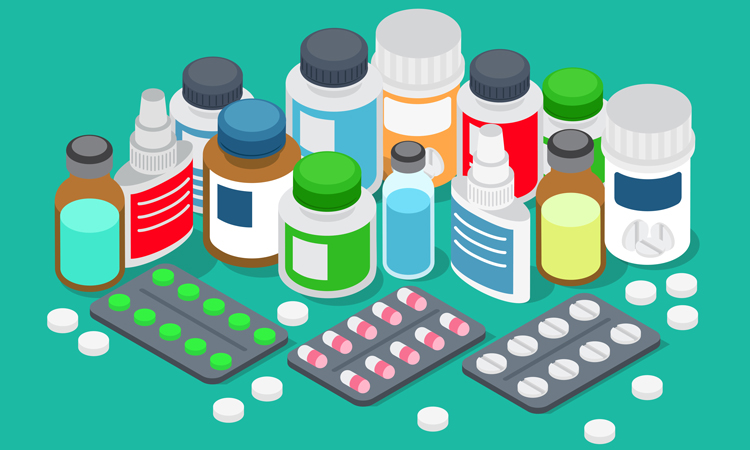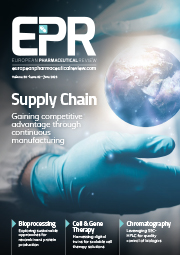Packaging security trends in the pharmaceutical industry
Posted: 20 December 2019 | Prakash Shetty (Bizongo) | 2 comments
Drug safety is a huge concern for big pharma and tampering and counterfeiting in the market is dangerous for both consumers and brands. In this article, Prakash Shetty shares the latest innovations in packaging design and highlights how tamper proofing and developments in technology can protect all concerned.


THE $20 BILLION pharmaceutical packaging industry is the frontrunner in deploying technology for advanced security through packaging. The rise of e-commerce and efficient logistics have made sophisticated drugs accessible worldwide, irrespective of their manufacturing locations. However, this presents a challenge to protect products throughout their lifecycle and against counterfeiting. Pharmaceutical packaging innovations are important not only for the effectiveness of drugs, but also to ensure authenticity, traceability, product protection and patients’ comfort.
Product security


Pharmaceutical packaging – security through technology
Technology can help identify unauthorised access by making tampering evident and also creating a barrier to it. Tamper-proofing solutions ensure product safety during storage and transit. Tamper-resistant packaging relies on two principles: the requirement for multiple layers of protection and making tampering evident in case of unauthorised access or when the package integrity is compromised. Tamper proofing is challenging, as the package requires protection from external intervention. One strategy for tamper proofing that is popular in the pharmaceutical industry involves the following five layers of protection:
- Primary closure: This involves securing the lid of the container such that any adjustments made after dispatch are recognisable
- Sealing: The process of making the primary closure permanent against transit pressure
- Isolating: Shrink wraps are used to safeguard the sealed container from moisture and other shipments
- Identification: Unique identification numbers prevent replication. It also makes the product identifiable in the supply chain.
- Secondary packaging: The outer shipping containers that are designed in accordance with the shippers’ guidelines.
Tamper evidence
Tampering can be made evident through overt security features. Overt technology involves authentication through visual inspection without any expert knowledge. Hologram, colour shift inks and tear tapes are scalable and cost-effective systems for tamper evidence. Consumers can refuse to accept the package or report it if they spot damage.
- Holograms: Brands usually use hologram techniques on their logo to indicate authenticity. Wear and tear on the hologram indicates rough handling and/or inappropriate storage.
- Colour shift inks: Colour shift inks may appear as two or more distinct colours when shifted to different angles and give an illusional 3D effect.
- Tear tapes: These are single-use polypropylene tapes. Consumers can identify tampering if the package lacks sealing tape or the tape is broken. Tear tapes are impossible to remove without destroying, hence making unauthorised access evident.
Preventing counterfeiting
Tamper-proofing technology combined with covert security features can help in preventing counterfeiting. Covert technology includes infrared (IR) and ultraviolet (UV) pigments, microtext and microscopic tagging, which are invisible through naked eyes. These are difficult to detect and replicate without specialist detection equipment. Security graphics and digital watermarks are the other techniques widely used in pharmaceutical packaging to confront counterfeiting.
- Security graphics: Design elements like line modulation and line embossing can produce a fine line colour printing similar to currency printing. Furthermore, microtext and latent images can make replication detectable.
- Digital watermarks: Digital watermarking or encoding involves invisible markings within graphics. Special software and readers are available to verify these markers.
Security through digitilisation
Digitilisation refers to the process of converting information into computer-readable format, which is easy to access irrespective of geographical location. The pharmaceutical packaging industry is deploying digital technology to combat counterfeiting and introduce efficient supply chain tracking.
Anti-counterfeiting apps
By simply scanning the medicine, anti-counterfeiting apps can tell the consumer whether the drug is fake or authentic. For example, the Drugsafe app, winner of the Big Data award at the 2018 Microsoft Imagine Cup, uses optical character recognition (OCR) to check the medicine’s authenticity in accordance with the Azure Cosmos database.
Digital mass serialisation


Security through product design
Ensuring safety for consumers is another important aspect of pharmaceutical packaging. Sophisticated drugs need careful handling and include age restrictions. Patients can become the victim of taking expired drugs, or children might access medicines that are not meant for them. The following packaging solutions are solving these consumer-centric challenges through design:
- Expiry date validation – “A picture speaks a thousand words and a QR code encodes a maximum of 4,296 alphanumeric characters.” A QR code is capable of coding the dose regimen for medicine along with its manufacturing and expiry date. Post consumption, the consumer can rescan the pack, enabling the app to update the regimen and send notifications accordingly.
- Childproofing and senior-friendly packaging – Uflex introduced an innovative packaging known as Child Resistant and Senior Friendly (CRSF) foils. These are available in two variants: push-through and peel-push, based on their operating mechanism. While it requires some amount of pressure for a child to open it, the procedure is easy for a senior citizen. This prevents unintentional handling damage to conventional blister foils.
- Timely drug dosage – Taking the right medicine in the right dosage is essential. Pill Pack, an Amazon company, took the initiative of coordinating with the patients’ drugs requirement and automatically shipping them refills as required.
Closing note
Security in pharmaceutical packaging is essential for both consumers’ safety and maintaining a brand’s integrity. Pharma is a sophisticated sector and its investment in secure packaging is essential. With innovations, technology and consumer acceptance, the serious problems of counterfeiting and tampering can be conquered.
About the author
Prakash Shetty has worked in the industry for over 17 years. He spent 14 years working at GlaxoSmithKline and currently works at Bizongo where he leads the Partner Growth team.
The rest of this content is restricted - login or subscribe free to access


Why subscribe? Join our growing community of thousands of industry professionals and gain access to:
- bi-monthly issues in print and/or digital format
- case studies, whitepapers, webinars and industry-leading content
- breaking news and features
- our extensive online archive of thousands of articles and years of past issues
- ...And it's all free!
Click here to Subscribe today Login here
Issue
Related topics
Distribution & Logistics, Drug Counterfeiting, Drug Supply Chain, Packaging, QA/QC, Research & Development (R&D), Supply Chain, Technology, Track and Trace










Thank you for this valuable information on pharmaceutical packaging
Great article to read, really some necessary information. Customized medication necessitates label and packaging manufacturers to handle smaller batches with shorter lead times.